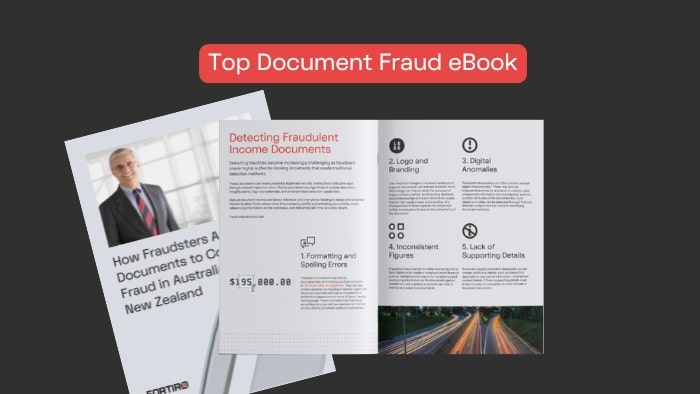Oct 15, 2024
[New eBook]: How Fraudsters Are Faking Documents to Commit Fraud

This is an excerpt from our exclusive eBook: ‘How Fraudsters Are Faking Documents to Commit Fraud in Australia and New Zealand“. Click here to get the full eBook.
“The rising cost of living and interest rates are not only putting a strain on household budgets, they are increasing the risk of loan application fraud across Australia and New Zealand.
Australian Bureau of Statistics (ABS) data shows that many borrowers are refinancing their home loans due to the recent surge in interest rates.
Reserve Bank of Australia (RBA) data reveals 450,000 fixed-rate home loans expire in 2024. The high volumes of refinancing, combined with increasing interest rates (and talk of further increases), pose significant operational challenges and risks for lenders who are not equipped with the necessary technology to combat fraud.
A survey by Finder, involving over 1,114 Australian homebuyers – including more than 300 who had already successfully secured a mortgage – revealed that 13%, or around one in eight, admitted to lying on their home loan application. Lenders collect extensive information from borrowers, including income, which according to UBS is a common area where borrowers may overstate their income on the application. Supporting documents to verify income are one of the most important assets for assessing an applicant’s financial standing.
A common document used for income verification is payslips. Payslips are rich data sources that can quickly verify a customer’s income and support credit decisions – payslips show all sorts of income attributes such as overtime, bonuses, allowances, and deductions. But what happens when they are fake or have been tampered with or were created to commit loan fraud?
Lenders must be able to verify the legitimacy of the supporting documents they receive. Based on the data they contain, lenders can make informed credit decisions. The capability to swiftly verify the authenticity of the supporting documents, whether through human expertise or technology, is crucial for effective income verification and maintaining the integrity of the lending process. If lenders rely on documents without verifying their authenticity, they risk approving applications based on false information.
While alternatives including open banking and transaction scraping exist, most customers still prefer sharing traditional documents like payslips or bank statements due to their simplicity and familiarity.
Fraud in the financial sector presents ongoing challenges, with technology making it more sophisticated and harder to detect. Staying informed about the latest fraud trends is crucial for protection. “
NB: This has been a preview of our exclusive eBook: ‘How Fraudsters Are Faking Documents to Commit Fraud in Australia and New Zealand‘.
In the full eBook, we’ll explore:
- The top fraud trends impacting lenders in Australia and New Zealand
- How fraudulent income documents are created
- How to detect them before they hurt your bottom line
Click here or on the image below to get the full eBook.

Get a demo today
Get a demo of Fortiro’s income document verification platform to see how it can help you.


